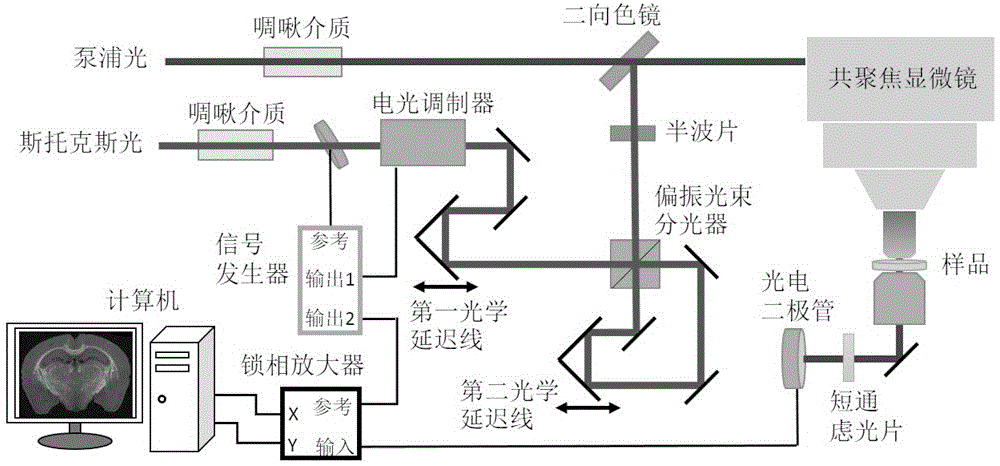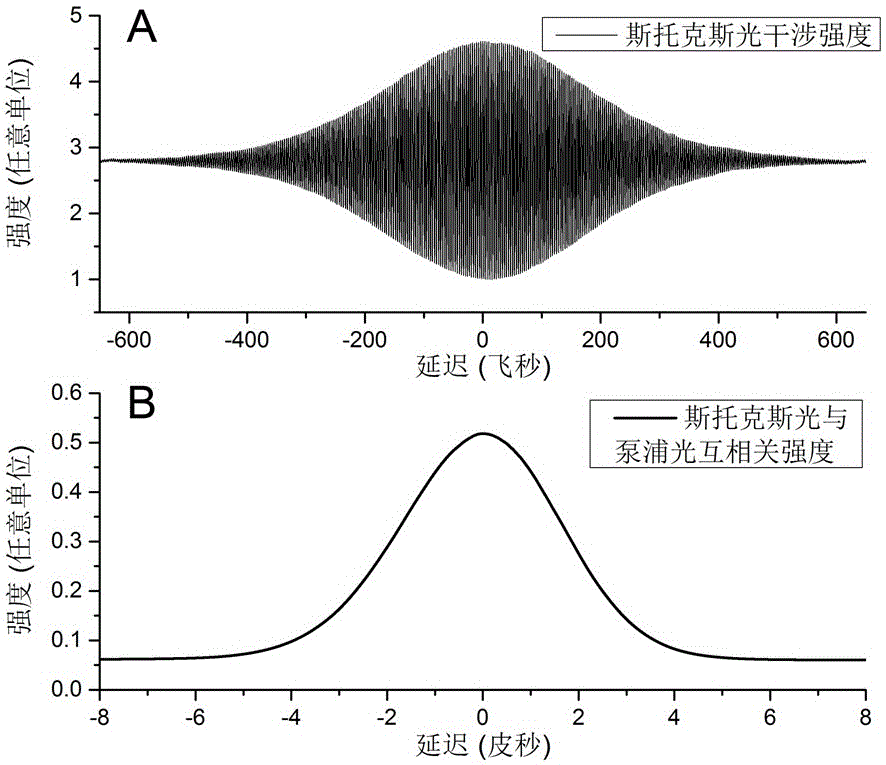Bicolor stimulated raman scattering imaging system based on bi-channel orthogonal detection
A stimulated Raman scattering and imaging system technology, applied in Raman scattering, material excitation analysis, etc., can solve problems such as error, inability to detect Raman vibration frequency in real time, optical delay line for a certain time, etc., to achieve improvement Low cost, promotion of clinical application, and the effect of eliminating spectral errors
- Summary
- Abstract
- Description
- Claims
- Application Information
AI Technical Summary
Problems solved by technology
Method used
Image
Examples
Embodiment Construction
[0020] The steps to build and test a two-color stimulated Raman imaging system are as follows:
[0021] (1) Transformation of Stokes light.
[0022] Such as figure 1 As shown, the two-color stimulated Raman imaging system built in the present invention is based on the hyperspectral stimulated Raman imaging system. The pulses of pump light and Stokes light, both of which are linearly polarized, are time-stretched by a chirped medium. The repetition frequency of the laser pulse collected in the Stokes optical path is used as the reference frequency of the signal generator to generate the modulation frequency of the optoelectronic modulator and the resolution reference frequency of the lock-in amplifier (laser repetition frequency is 80MHz, electro-optic modulation and phase-locked The demodulation frequency of the amplifier is 20MHz). Electro-optic modulators can periodically change the polarization properties of Stokes light. In this way, when the Stokes light encounters th...
PUM
 Login to View More
Login to View More Abstract
Description
Claims
Application Information
 Login to View More
Login to View More - Generate Ideas
- Intellectual Property
- Life Sciences
- Materials
- Tech Scout
- Unparalleled Data Quality
- Higher Quality Content
- 60% Fewer Hallucinations
Browse by: Latest US Patents, China's latest patents, Technical Efficacy Thesaurus, Application Domain, Technology Topic, Popular Technical Reports.
© 2025 PatSnap. All rights reserved.Legal|Privacy policy|Modern Slavery Act Transparency Statement|Sitemap|About US| Contact US: help@patsnap.com



